Abstract
Infectious diseases establish in a population of wildlife hosts when the number of secondary infections is greater than or equal to one. To estimate whether establishment will occur requires extensive experience or a mathematical model of disease dynamics and estimates of the parameters of the disease model. The latter approach is explored here. Methods for estimating key model parameters, the transmission coefficient (beta) and the basic reproductive rate (RDRS), are described using classical swine fever (hog cholera) in wild pigs as an example. The tentative results indicate that an acute infection of classical swine fever will establish in a small population of wild pigs. Data required for estimation of disease transmission rates are reviewed and sources of bias and alternative methods discussed. A comprehensive evaluation of the biases and efficiencies of the methods is needed.
Full text
PDF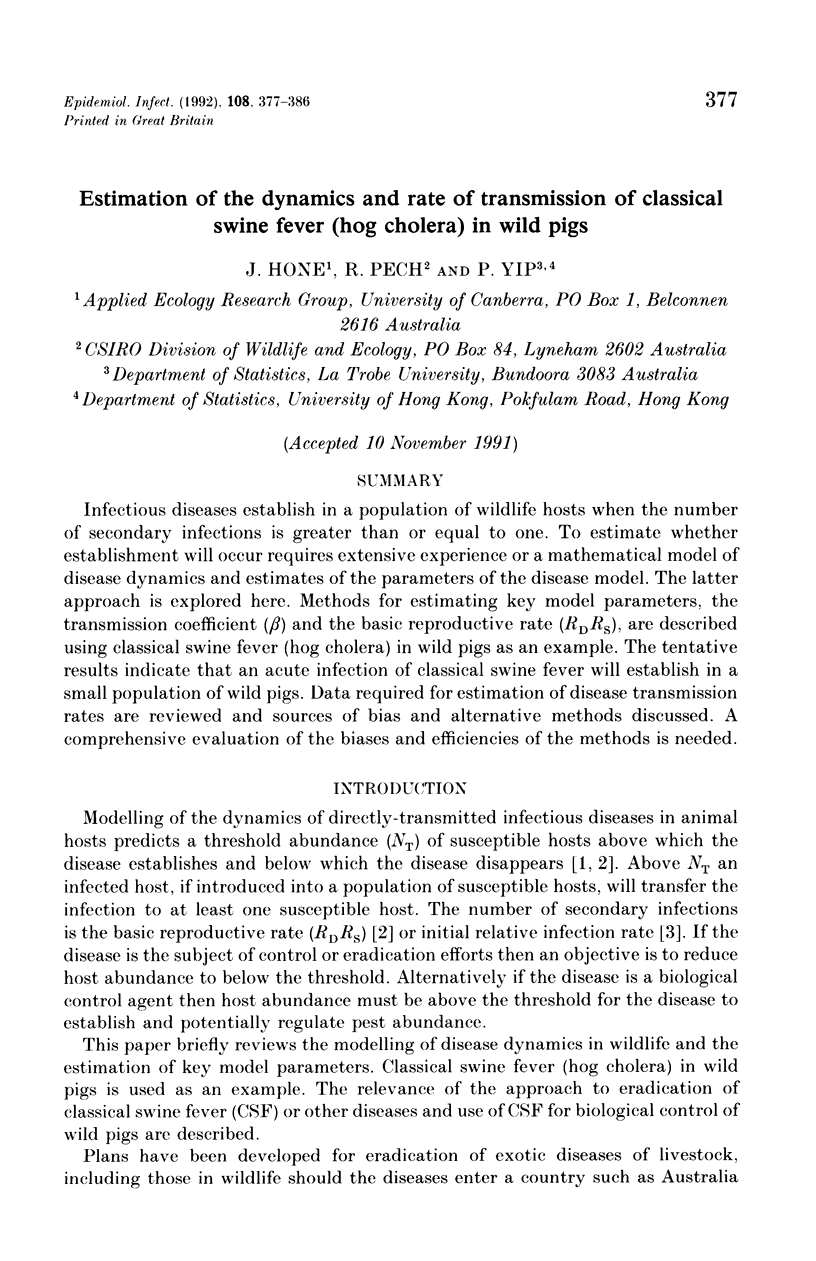
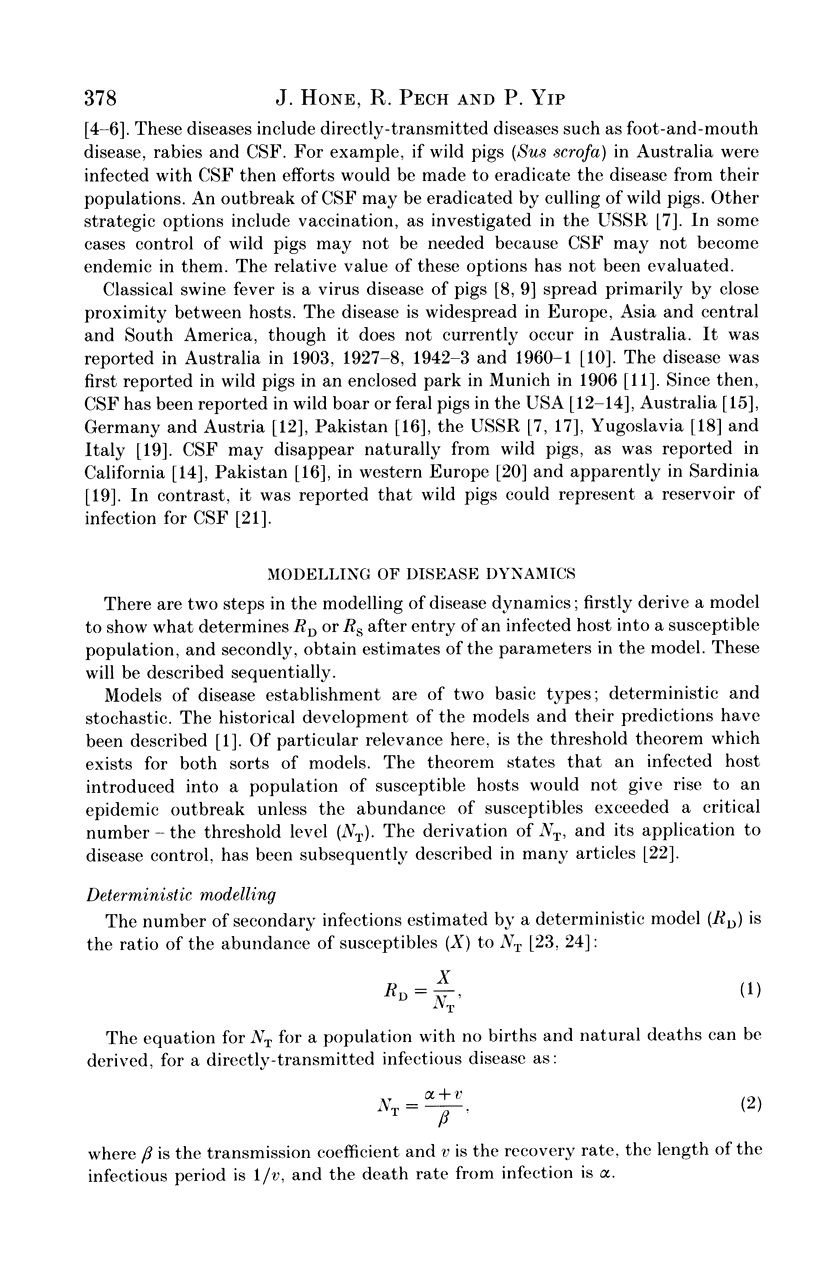
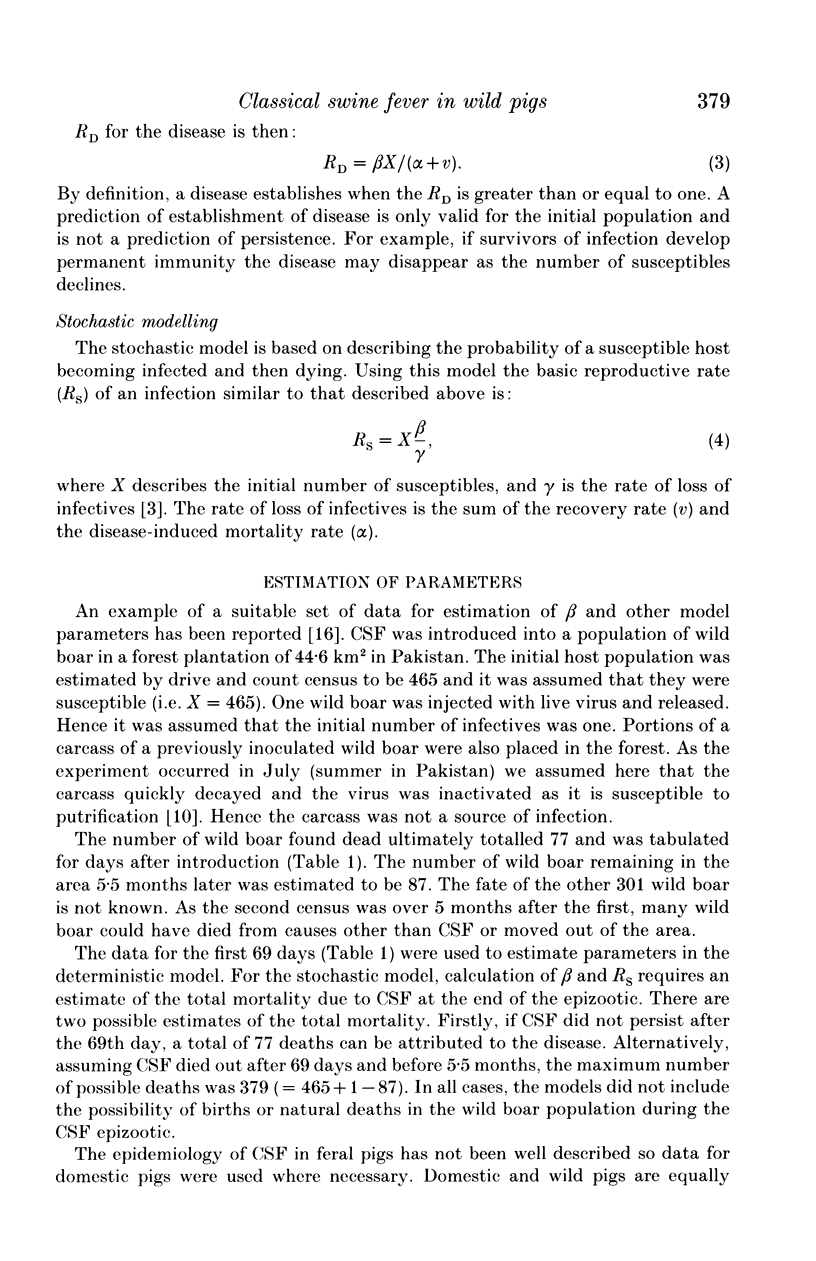
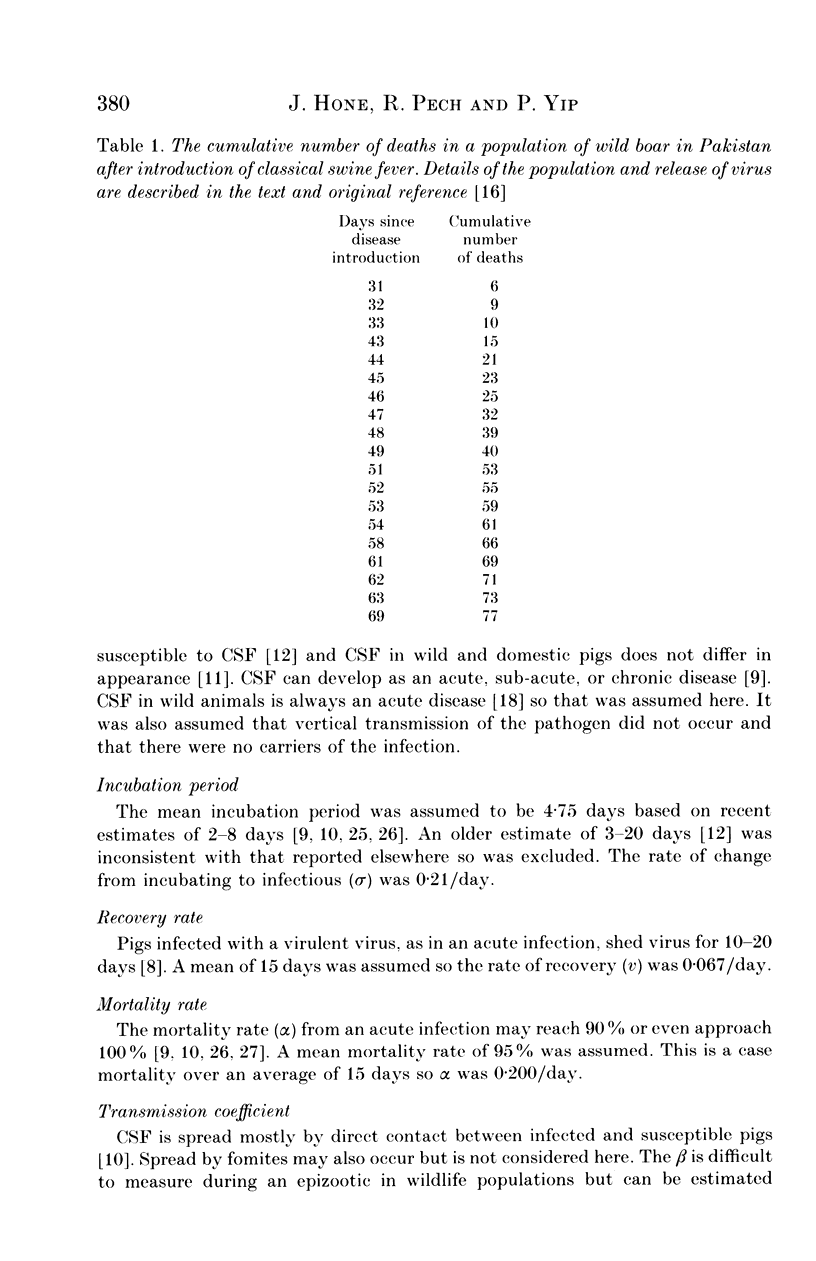
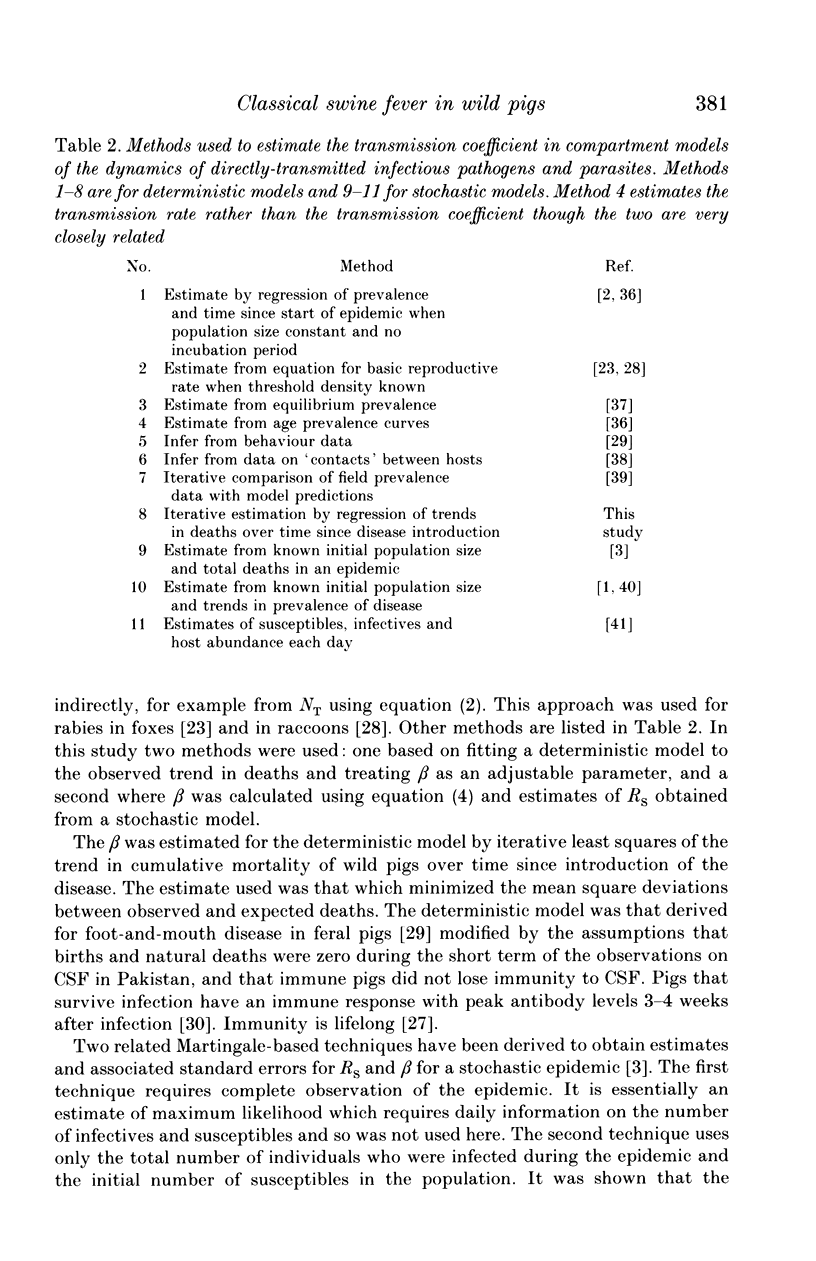
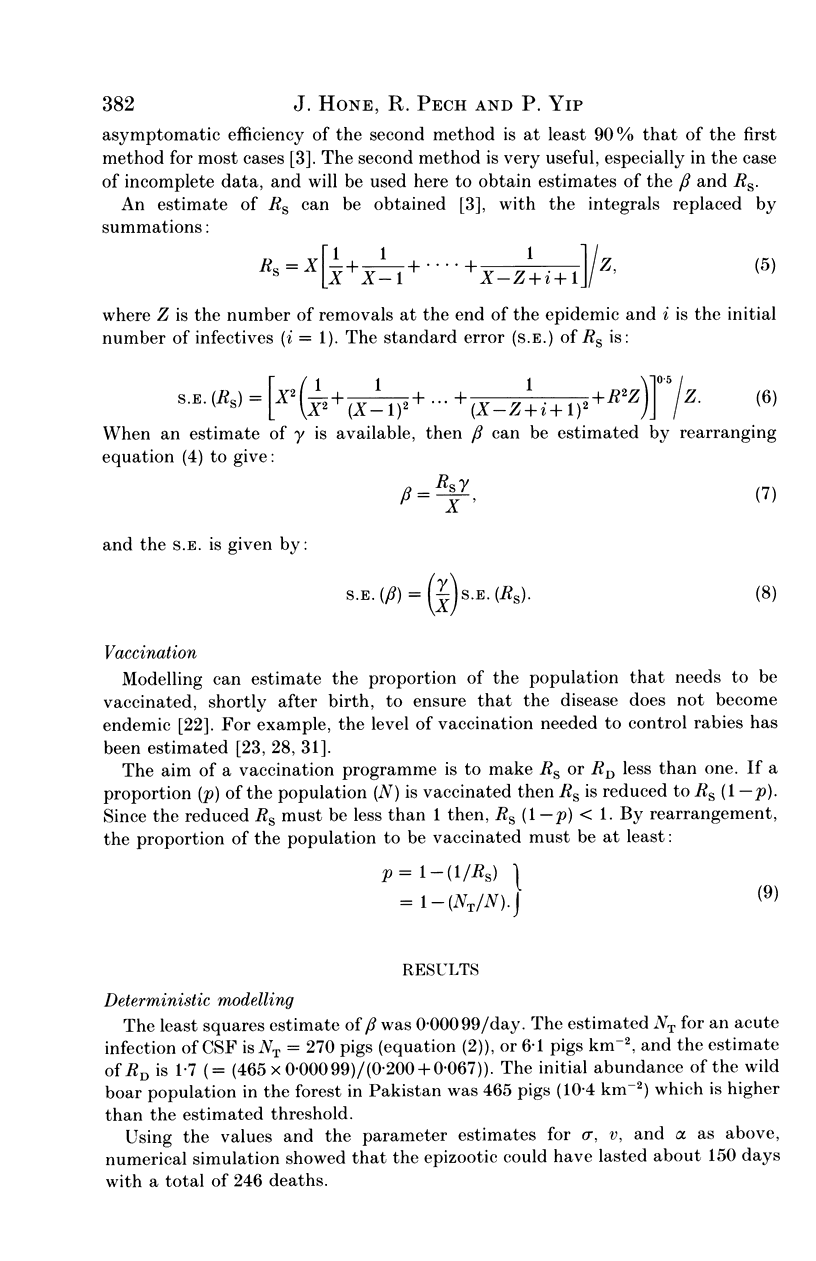
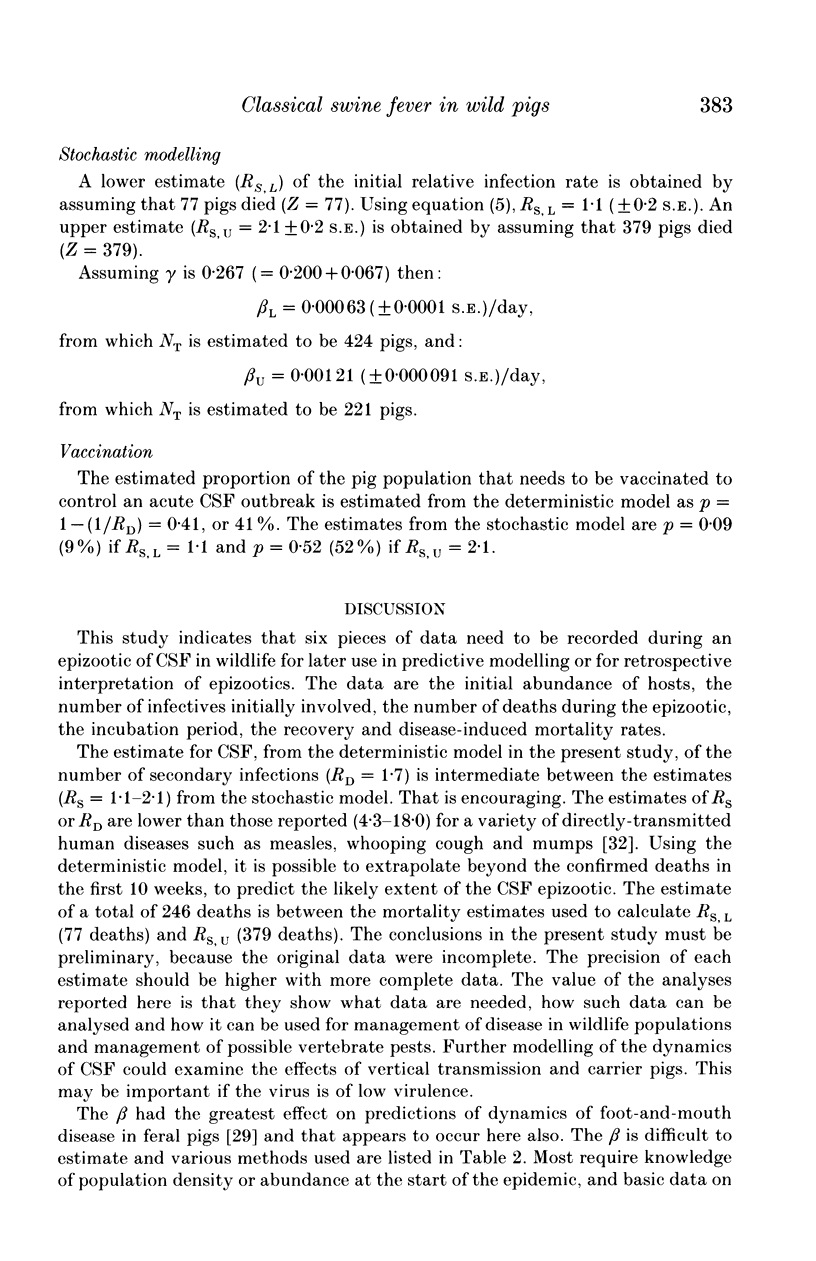
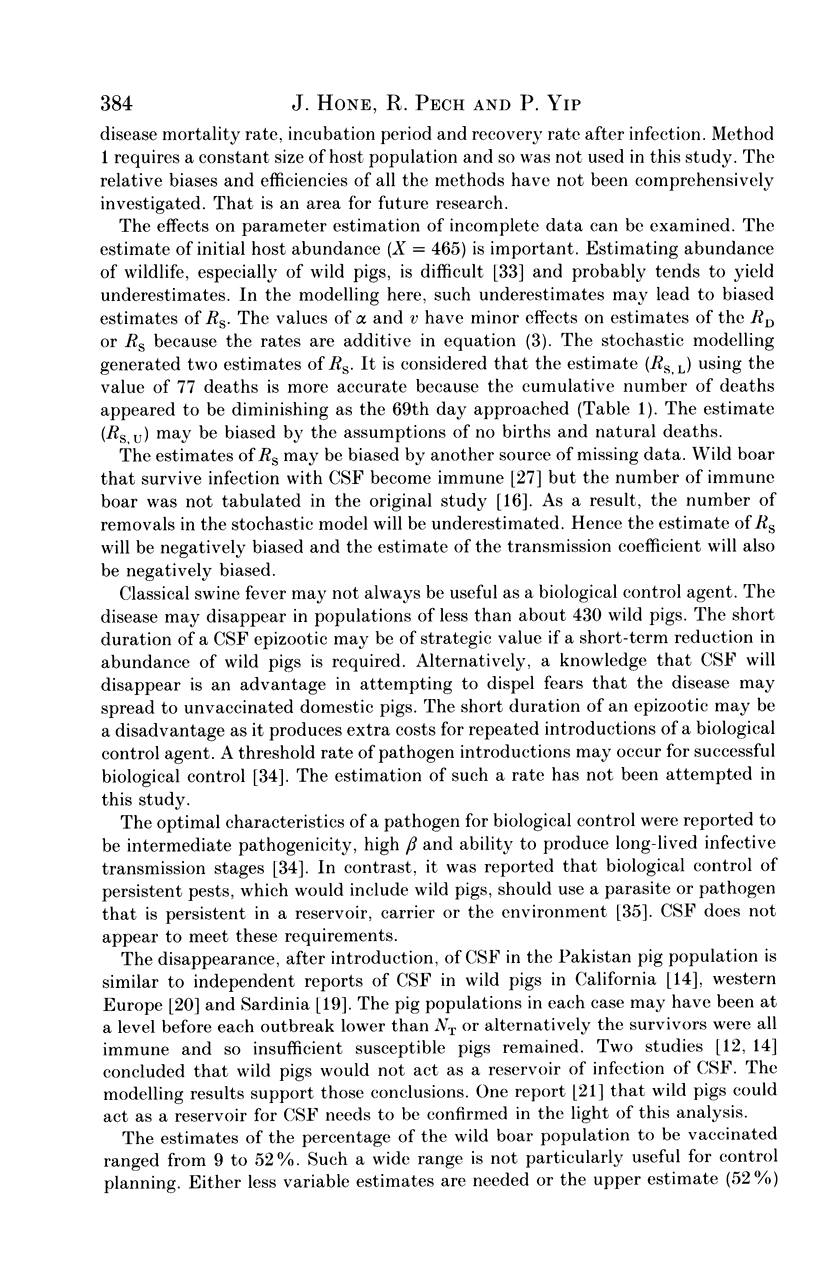
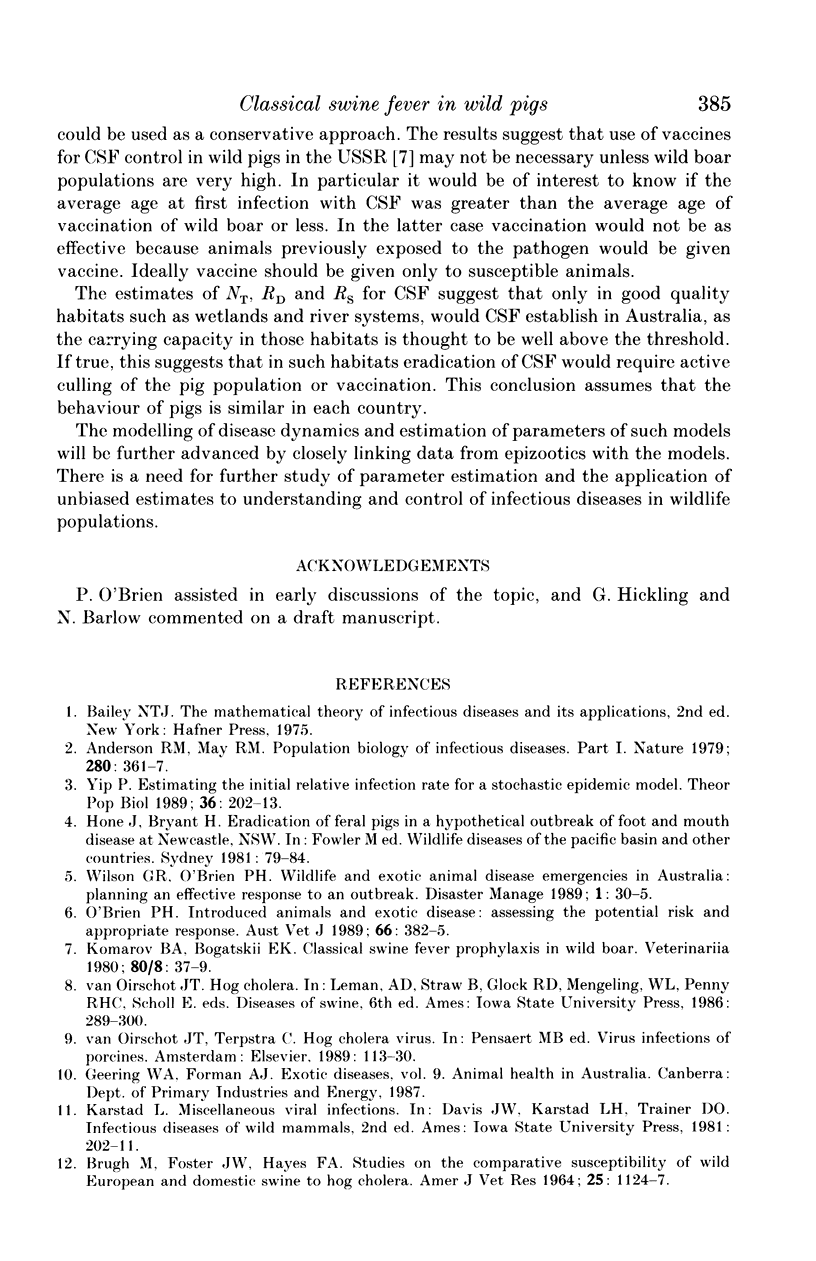
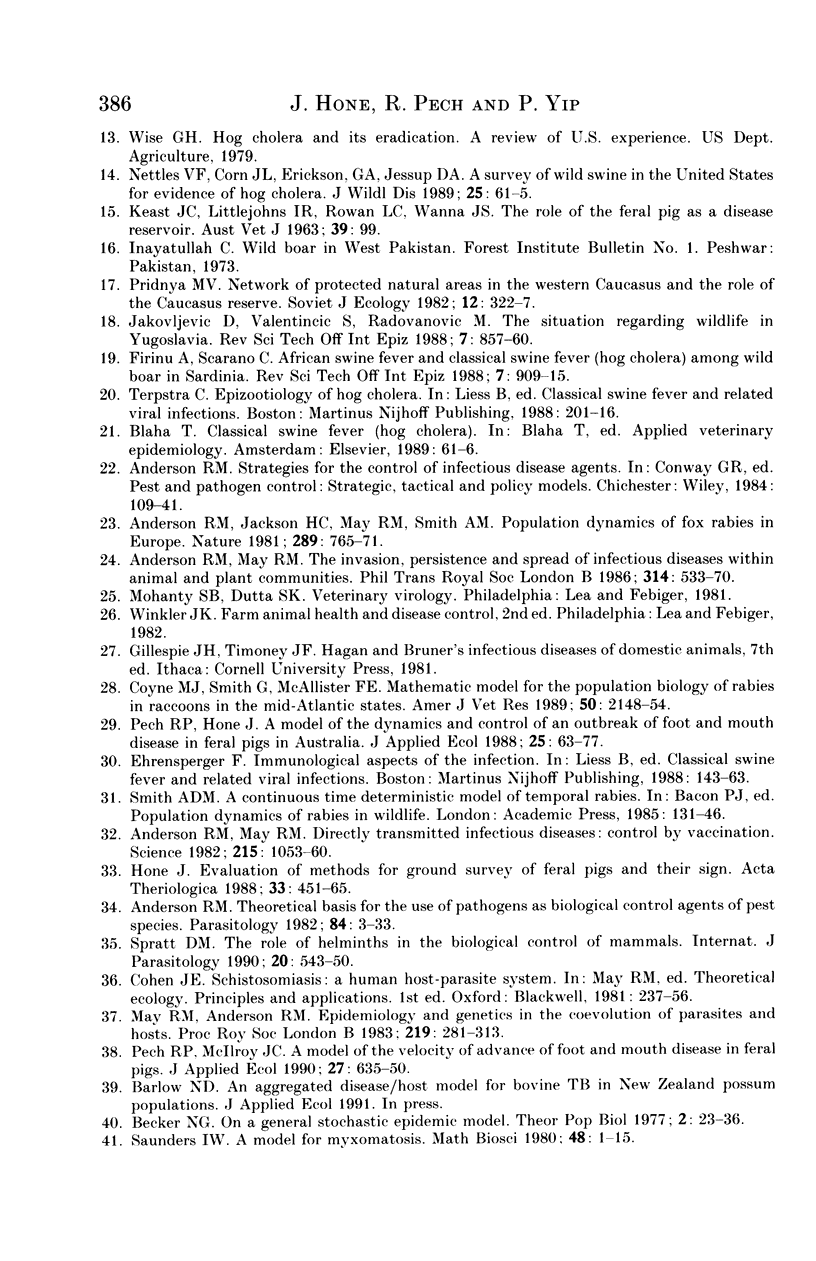
Selected References
These references are in PubMed. This may not be the complete list of references from this article.
- Anderson R. M., Jackson H. C., May R. M., Smith A. M. Population dynamics of fox rabies in Europe. Nature. 1981 Feb 26;289(5800):765–771. doi: 10.1038/289765a0. [DOI] [PubMed] [Google Scholar]
- Anderson R. M., May R. M. Directly transmitted infections diseases: control by vaccination. Science. 1982 Feb 26;215(4536):1053–1060. doi: 10.1126/science.7063839. [DOI] [PubMed] [Google Scholar]
- Anderson R. M., May R. M. Population biology of infectious diseases: Part I. Nature. 1979 Aug 2;280(5721):361–367. doi: 10.1038/280361a0. [DOI] [PubMed] [Google Scholar]
- Anderson R. M., May R. M. The invasion, persistence and spread of infectious diseases within animal and plant communities. Philos Trans R Soc Lond B Biol Sci. 1986 Dec 15;314(1167):533–570. doi: 10.1098/rstb.1986.0072. [DOI] [PubMed] [Google Scholar]
- BRUGH M., Jr, FOSTER J. W., HAYES F. A. STUDIES ON THE COMPARATIVE SUSCEPTIBILITY OF WILD EUROPEAN AND DOMESTIC SWINE TO HOG CHOLERA. Am J Vet Res. 1964 Jul;25:1124–1127. [PubMed] [Google Scholar]
- Becker N. G. On a general stochastic epidemic model. Theor Popul Biol. 1977 Feb;11(1):23–36. doi: 10.1016/0040-5809(77)90004-1. [DOI] [PubMed] [Google Scholar]
- Coyne M. J., Smith G., McAllister F. E. Mathematic model for the population biology of rabies in raccoons in the mid-Atlantic states. Am J Vet Res. 1989 Dec;50(12):2148–2154. [PubMed] [Google Scholar]
- May R. M., Anderson R. M. Epidemiology and genetics in the coevolution of parasites and hosts. Proc R Soc Lond B Biol Sci. 1983 Oct 22;219(1216):281–313. doi: 10.1098/rspb.1983.0075. [DOI] [PubMed] [Google Scholar]
- O'Brien P. H. Introduced animals and exotic disease: assessing potential risk and appropriate response. Aust Vet J. 1989 Dec;66(12):382–385. doi: 10.1111/j.1751-0813.1989.tb13553.x. [DOI] [PubMed] [Google Scholar]
- Spratt D. M. The role of helminths in the biological control of mammals. Int J Parasitol. 1990 Jul;20(4):543–550. doi: 10.1016/0020-7519(90)90202-x. [DOI] [PubMed] [Google Scholar]
- Yip P. Estimating the initial relative infection rate for a stochastic epidemic model. Theor Popul Biol. 1989 Oct;36(2):202–213. doi: 10.1016/0040-5809(89)90030-0. [DOI] [PubMed] [Google Scholar]


